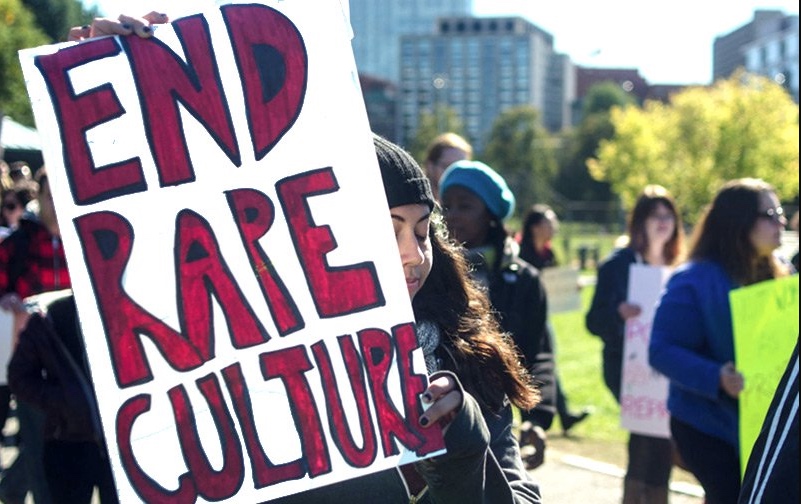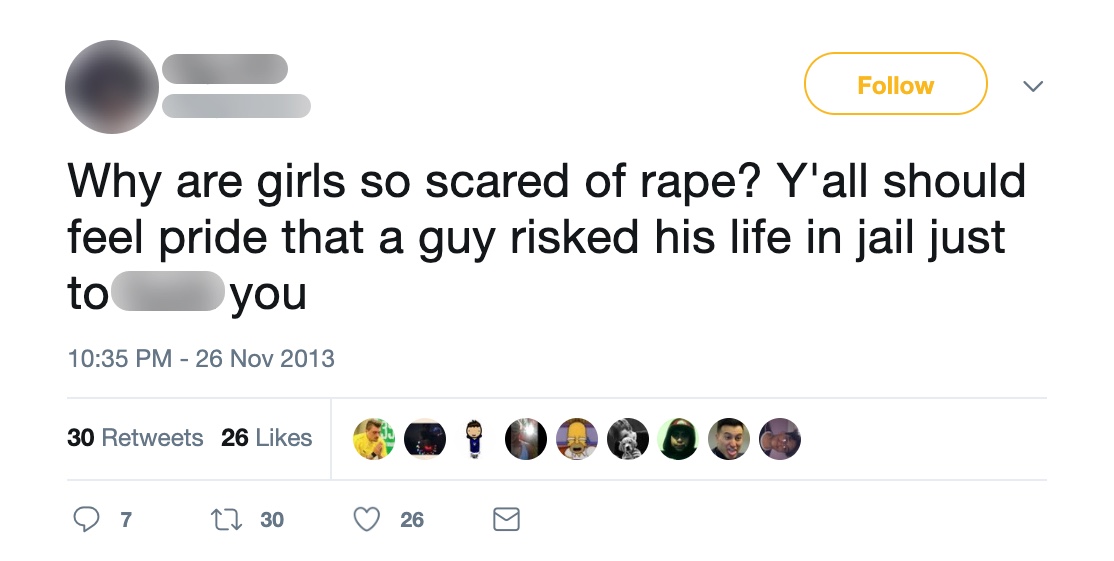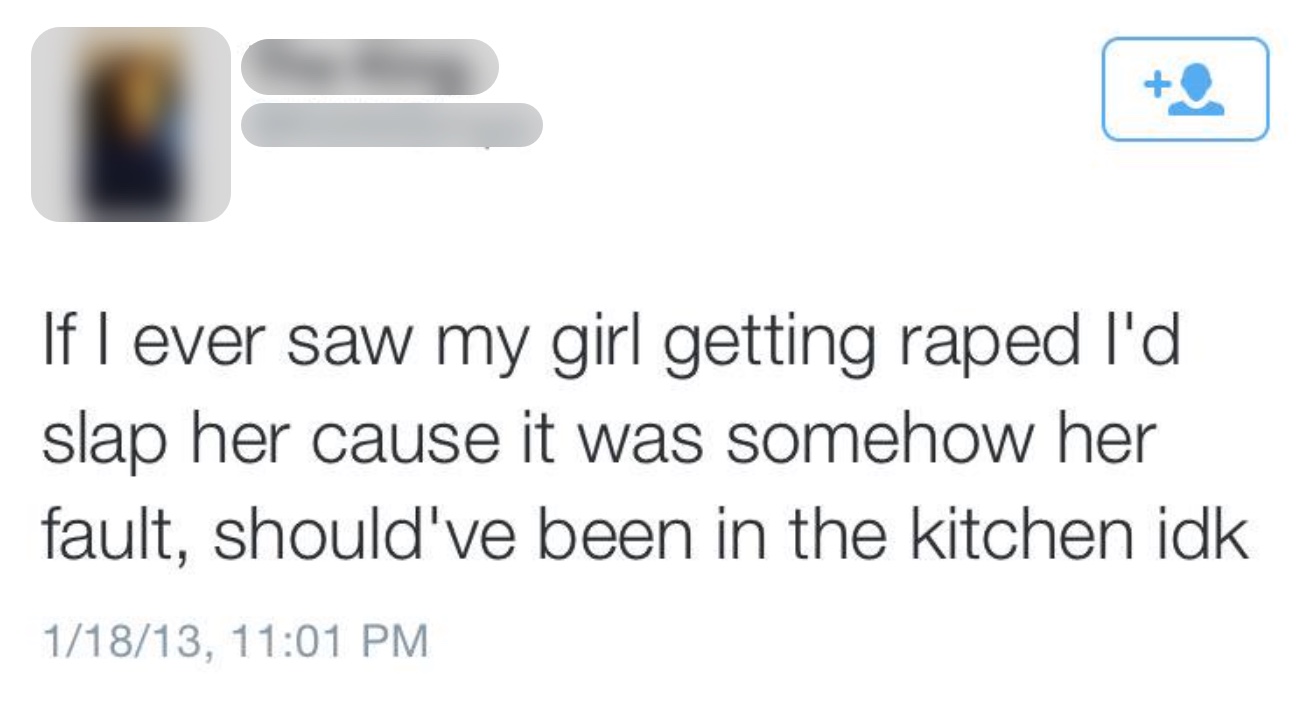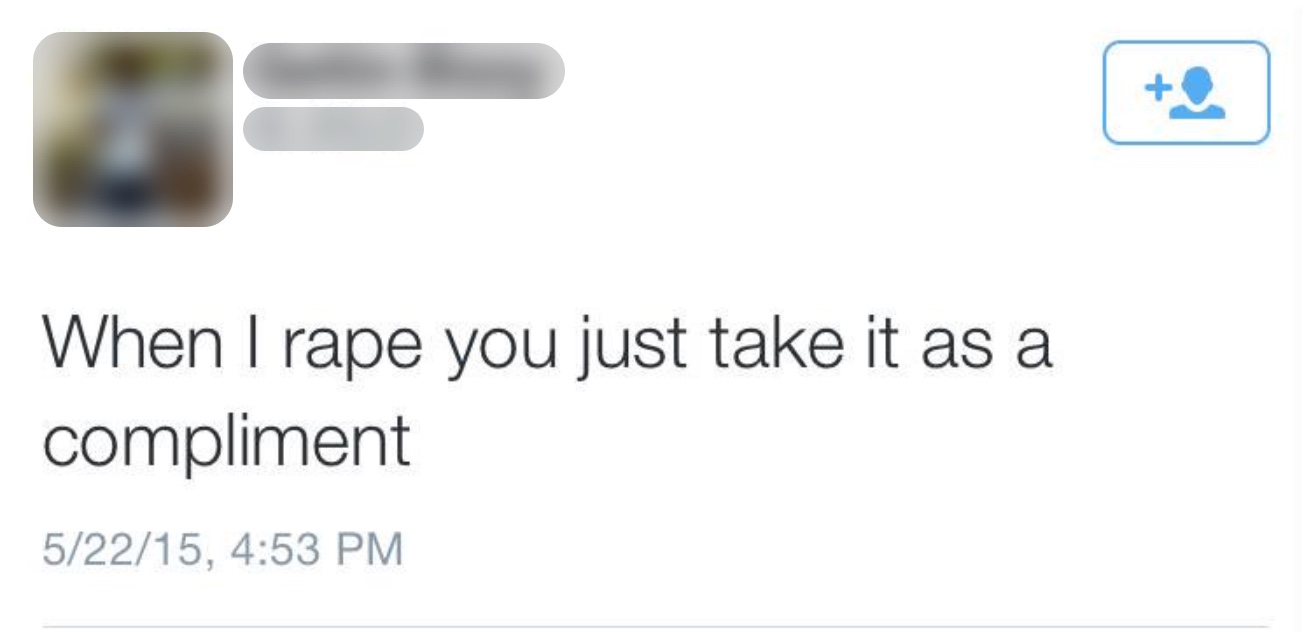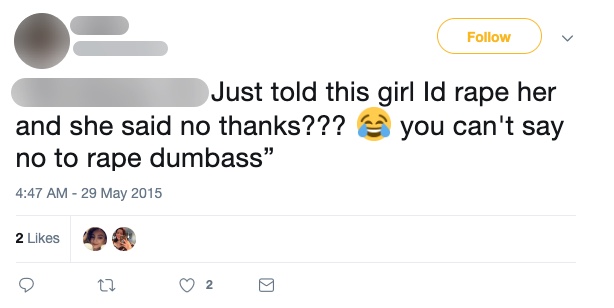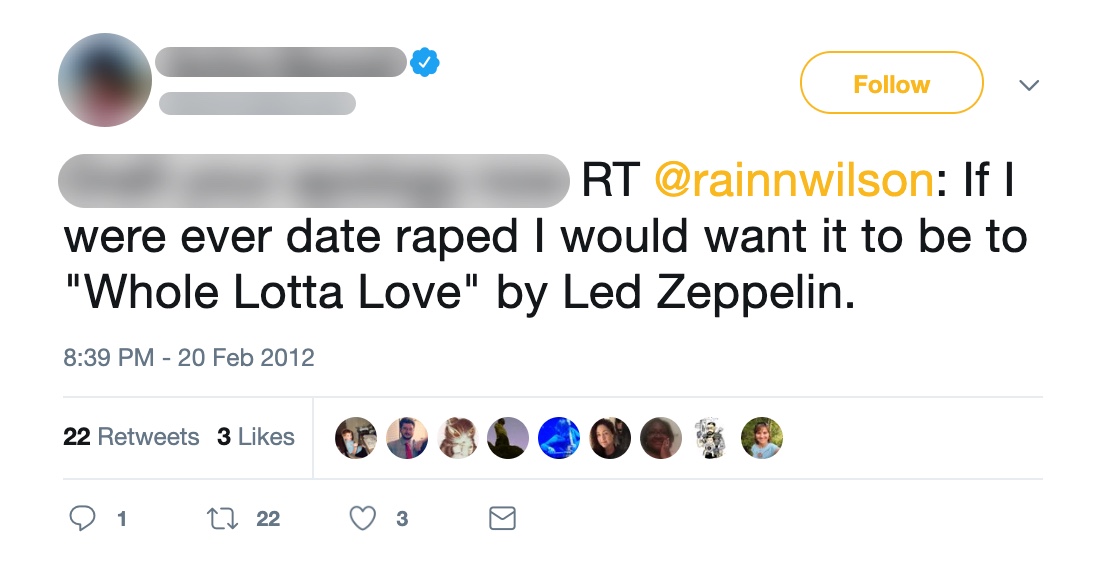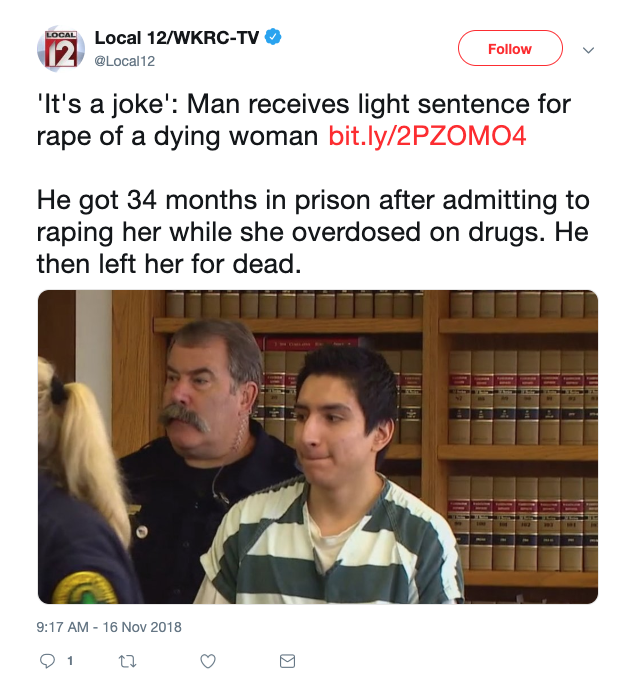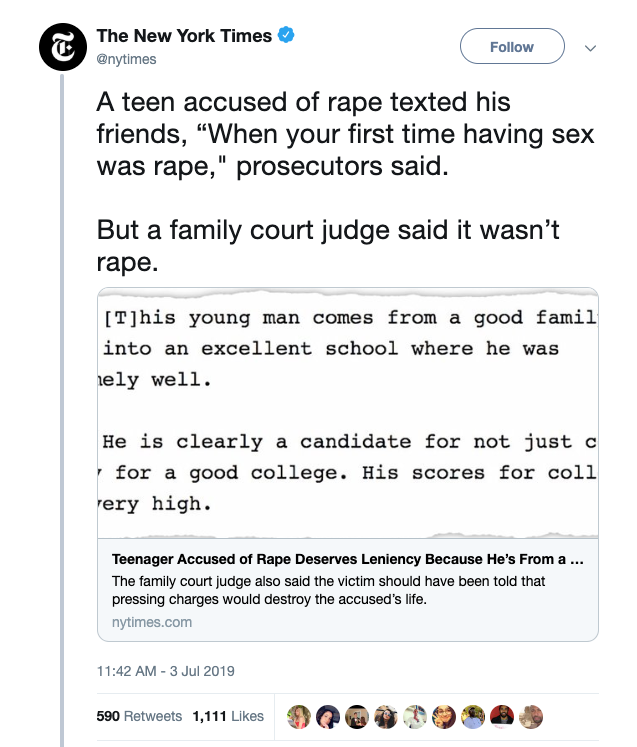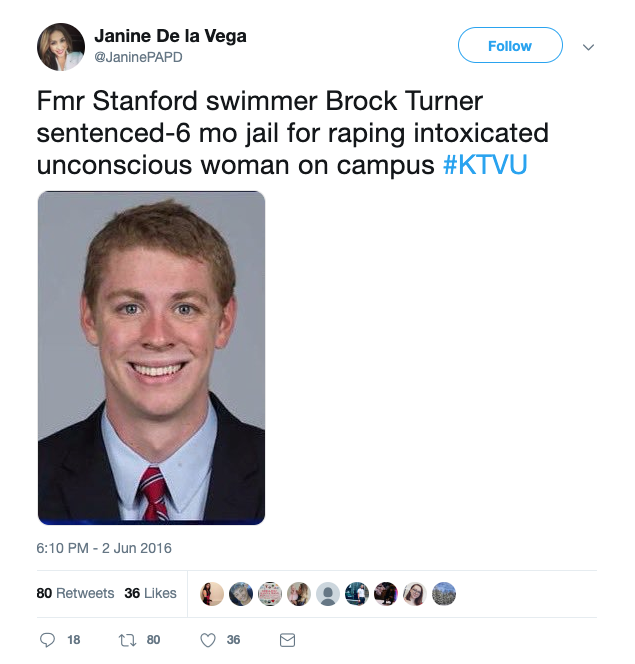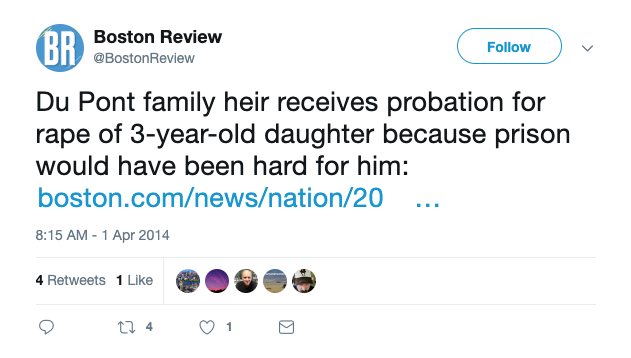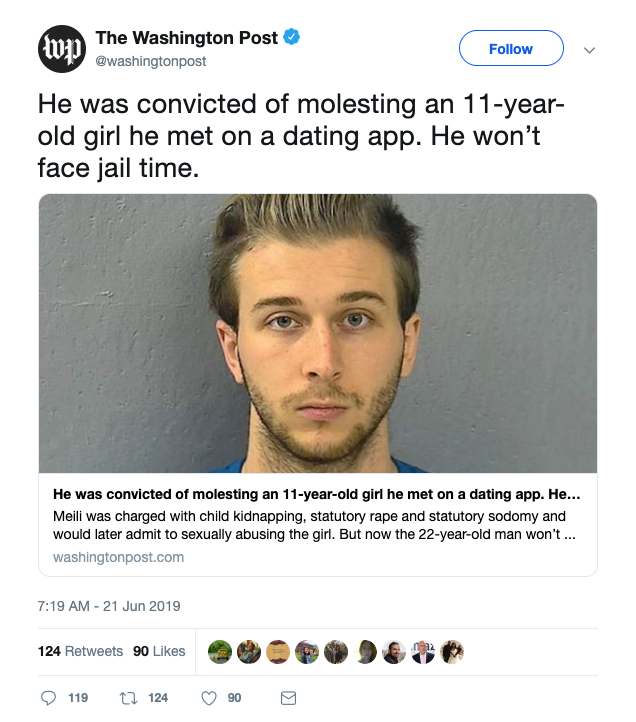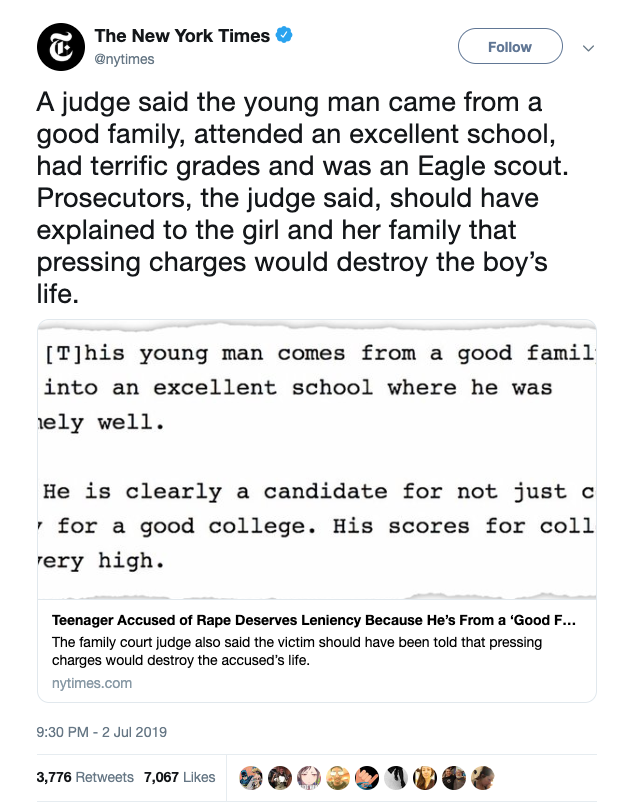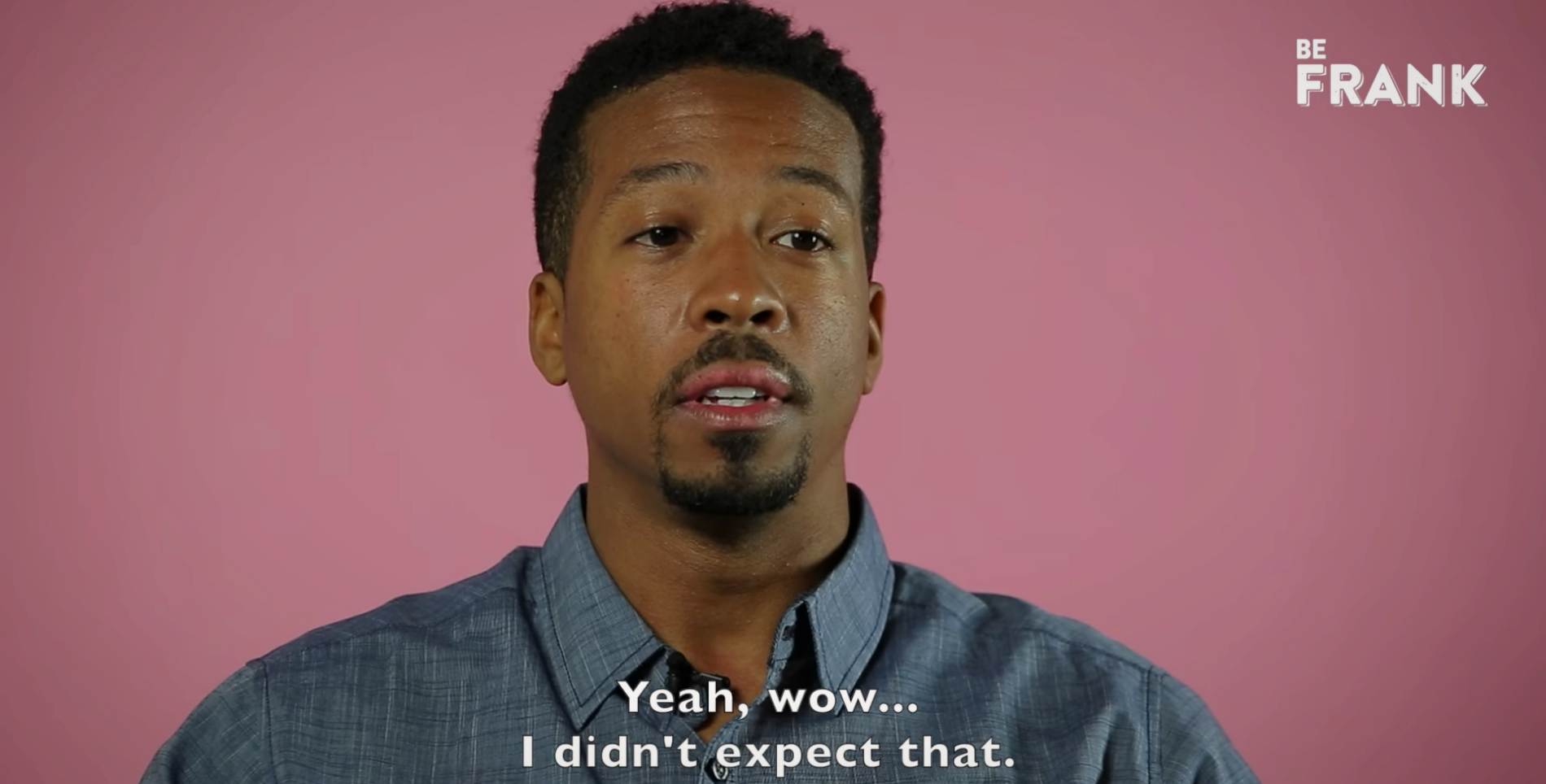Cover image retrieved from PBS.org. 10-minute read.
Trigger warning:
Disclaimer: This is an issue that involves everyone—both men and women can be porn consumers, and both men and women can be victims of sexual violence. By sharing the following studies and stats, it is not our intention to imply that every porn consumer will develop into a violent abuser.
“Rape culture.” It’s a term many of us hear on a regular basis, but do all of us actually know what it is?
Rape Culture is commonly defined as a societal context where sexual assault is widespread, and the media and popular culture normalizes and excuse violence against women. This damaging culture is sustained through the use of derogatory language toward women, the objectification of their bodies, and the romanticization of sexual violence. Consequently, it fosters a society that dismisses women’s rights and safety as it perpetuates harmful attitudes and behaviors. While this definition focuses on violence against women, it’s important to note that sexual violence can happen to anyone of any gender.
Basically, rape culture is a culture in which sexual violence is treated as normal and victims are often blamed for their own assaults. Vox clarifies that it’s not just about sexual violence itself, but about cultural norms and institutions that protect rapists, promote impunity, shame victims, and demand that people make unreasonable sacrifices to avoid becoming a victim (like not going out at night), rather than putting the onus on the perpetrator.Taub, A. (2014). Rape culture isn’t a myth. It’s real, and it’s dangerous. Vox Retrieved from https://www.vox.com/2014/12/15/7371737/rape-culture-definitionCopy
Keep in mind that acknowledging rape culture is not claiming that every man is a rapist, or every woman is a victim. It’s simply defining and pointing out the prevalent rhetoric that exists around rape and sexual assault.
Still, that’s a lot of heavy information, so let’s break it down point by point based on the definition above and see if there are relevant examples of each of these things to prove or disprove that this is a real thing.
Rape culture is…
1. “…An environment in which rape is prevalent…”
Rape is a very serious crime. Sometimes, people use “sexual violence” or “sexual assault” to describe rape and/or other sexually abusive behaviors because it covers a broader scope of what can happen rather than saying “rape.” For this piece, we’ll use sexual assault to describe sexually violent behaviors that also include rape.
From 1927 to 2012, according to the United States Department of Justice, “forcible rape” was legally defined as “the carnal knowledge of a female, forcibly and against her will” and only included forcible male penile penetration of a female vagina.The United States Department of Justice. (2012). An updated definition of rape. Retrieved from https://www.justice.gov/archives/opa/blog/updated-definition-rapeCopy As of 2012, the new definition is:
“The penetration, no matter how slight, of the vagina or anus with any body part or object, or oral penetration by a sex organ of another person, without the consent of the victim.”The United States Department of Justice. (2012). An updated definition of rape. Retrieved from https://www.justice.gov/archives/opa/blog/updated-definition-rapeCopy
According to the DOJ, for the first time ever, the new definition includes any gender of victim and perpetrator, not just women being raped by men. It also recognizes that rape with an object can be as traumatic as penile/vaginal rape. This definition also includes instances in which the victim is unable to give consent because of temporary or permanent mental or physical incapacity. Furthermore, because many rapes are facilitated by drugs or alcohol, the new definition recognizes that a victim can be incapacitated and thus unable to consent because of ingestion of drugs or alcohol. Similarly, a victim may be legally incapable of consent because of age. The ability of the victim to give consent must be determined in accordance with individual state statutes. Physical resistance is not required on the part of the victim to demonstrate lack of consent.The United States Department of Justice. (2012). An updated definition of rape. Retrieved from https://www.justice.gov/archives/opa/blog/updated-definition-rapeCopy
All of that taken into consideration, how common is rape?
According to data from the US National Crime Victimization Survey between 2015 and 2019, the average number of annual rapes and sexual assaults of individuals 12 or older is 463,634—that’s nearly half a million known cases every year.United States Department of Justice. (2020). Criminal victimization, 2019. Bureau of Justice Statistics. Retrieved from https://bjs.ojp.gov/content/pub/pdf/cv19.pdfCopy Research by the Centers for Disease Control estimates that nearly 1 in 5 women and 1 in 38 men have experienced an attempted or completed rape in their lifetime.Smith, S.G., Zhang, X., Basile, K.C., Merrick, M.T., Wang, J., Kresnow, M., Chen, J. (2018). The National Intimate Partner and Sexual Violence Survey (NISVS): 2015 Data Brief – Updated Release. Atlanta, GA: National Center for Injury Prevention and Control, Centers for Disease Control and Prevention.Copy
While these numbers are shocking, it’s also important to remember that only 310 out of every 1,000 sexual assaults are reported to police, which means that more than 2 out of 3 go unreported.RAINN. (2020). The criminal justice system: Statistics. Retrieved from https://www.rainn.org/statistics/criminal-justice-systemCopy
Whenever these high rates of assault are reported, we often see comments from people discrediting the stats by inflating the number of false reports. Here’s one tweet we found in response to someone mentioning that false reports are not common:
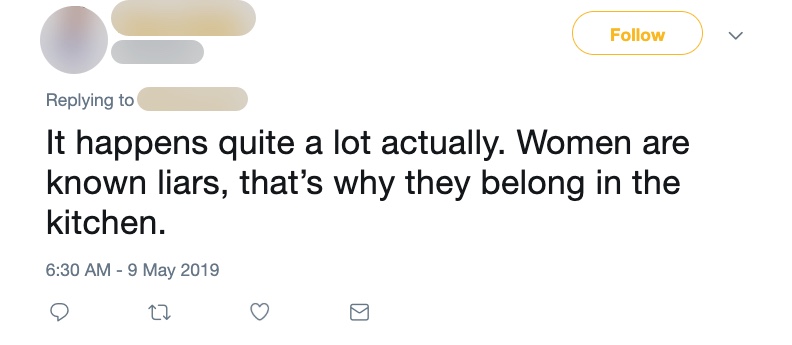
But the reality is, research estimates that only 2-10% of rapes are found to be falsely reported.Lisak, D., Gardinier, L., Nicksa, S. C., & Cote, A. M. (2010). False allegations of sexual assualt: an analysis of ten years of reported cases. Violence against women, 16(12), 1318–1334. https://doi.org/10.1177/1077801210387747Copy For reference, it’s estimated that at least 10% of reported auto thefts are false reports.Lyons, D., & Teigen, A. (2008). National conference of state legislatures: Auto theft prevention. National Conference of State Legislatures. Retrieved from https://www.ncsl.org/print/cj/autotheftreport.pdfCopy Keeping in mind that the vast majority of sexual assaults go unreported, and only a fraction of those that are reported are considered false reports, false reporting is a much smaller issue than underreporting. Why are we less willing to believe someone if they say they were raped than if they say their car was stolen?
So, seeing that rape culture needs to include an environment in which rape and sexual assault are prevalent, do we have enough evidence? Unfortunately, we do. Check.
2. “…An environment in which sexual violence is normalized/excused…”
Sexual violence is such a serious offense, how could we possibly be living in a society where any part of it is normalized or excused?
Well to start, let’s consider porn. Research estimates that at least 35% and as much as 88% of porn scenes portray physical aggression or violence—almost always toward women.Fritz, N., Malic, V., Paul, B., & Zhou, Y. (2020). A Descriptive Analysis of the Types, Targets, and Relative Frequency of Aggression in Mainstream Pornography. Archives of sexual behavior, 49(8), 3041–3053. https://doi.org/10.1007/s10508-020-01773-0Copy Bridges, A. J., Wosnitzer, R., Scharrer, E., Sun, C., & Liberman, R. (2010). Aggression and sexual behavior in best-selling pornography videos: a content analysis update. Violence against women, 16(10), 1065–1085. https://doi.org/10.1177/1077801210382866Copy That means, even by the lowest estimates, at least 1 in 3 porn videos shows physical violence or aggression.Fritz, N., Malic, V., Paul, B., & Zhou, Y. (2020). A Descriptive Analysis of the Types, Targets, and Relative Frequency of Aggression in Mainstream Pornography. Archives of sexual behavior, 49(8), 3041–3053. https://doi.org/10.1007/s10508-020-01773-0Copy That’s especially concerning considering that an estimated 91.5% of men and 60.2% of women consume porn.Solano, I., Eaton, N. R., & O'Leary, K. D. (2020). Pornography Consumption, Modality and Function in a Large Internet Sample. Journal of sex research, 57(1), 92–103. https://doi.org/10.1080/00224499.2018.1532488Copy Portrayals of sexual violence are difficult to escape in porn. In fact, a 2021 study found that 1 out of every 8 porn titles shown to first-time visitors to porn sites described acts of sexual violence.Vera-Gray, F., McGlynn, C., Kureshi, I., & Butterby, K. (2021). Sexual violence as a sexual script in mainstream online pornography. The British Journal of Criminology, doi:10.1093/bjc/azab035Copy
When it comes to sexual violence being excused, that’s where victim-blaming comes in. Ever heard any of these common victim-blaming tactics?
-Wearing revealing clothing, behaving provocatively, or drinking a lot means someone was “asking for it.”
-“You walked through a dangerous neighborhood, what did you expect?”
-“Once consent is given to sexual contact it cannot be withdrawn.”
Any time someone defaults to questioning what a victim could have done differently to prevent a crime, he or she is participating, to some degree, in the culture of victim-blaming. Instead of holding the perpetrator in full responsibility for their actions—sexual violence, in this case—this behavior excuses or minimizes the assault because the victim was ultimately to blame.
Click here to read more common rape myths from Rape Victim Advocates, a nonprofit dedicated to helping empower survivors of sexual assault.
In addition to this excusing culture, rape jokes are pretty common, too, and they only serve to normalize sexual violence. Here’s a very simple example of this.
The original tweet says “sco pa tu manaa,” which comes from a Zambian phrase meaning, “What do you think about this?” Look at this top response:

Ever heard jokes like this before? We have, too.
Here are a few more examples of rape jokes that normalize, excuse, or trivialize the seriousness of sexual assault and rape.[/vc_column_text]
So, rape culture being an environment where sexual violence is normalized and excused? Unfortunately, that checks out, too.
3. “…Fueled by the role of media and popular culture…”
For this point too, we don’t have to look any further than the mainstream porn industry to see where sexual violence against women is normalized and excused.
Consider the titles of popular porn videos that can be found with a simple Google search: “Stupid wh— taught to listen as she is f— in the a—,” 2.9M views. “Drunk s— degraded and gets what she deserves.” “Wh— raped and humiliated.” These are just the start of easily accessible porn videos with millions of views that fetishize, normalize, and even celebrate sexual violence against women, selling it as a fantasy instead of the real nightmare that it is.
Not only porn, but popular rom-coms and many popular songs also use language that normalizes sexual assault and other forms of harassment or violence. “Blurred Lines” by Robin Thicke, anyone?
So, do media and pop culture fuel the normalization and excuse of sexual assault, further fueling rape culture? Check. Unfortunately, they do.
4. “…Perpetuated through misogynistic language…”
Misogynistic language is defined as language that shows a dislike of, contempt for, or ingrained prejudice against women. Even though men are often the ones using this kind of language, women have been found to use it, too.
Misogynistic language can also be found in the forms of joking about rape or nonconsensual sexual encounters, turning nonconsensual or painful sexual encounters for women into the punchline of a joke. This is an infamous chant from a well-known Ivy League fraternity:
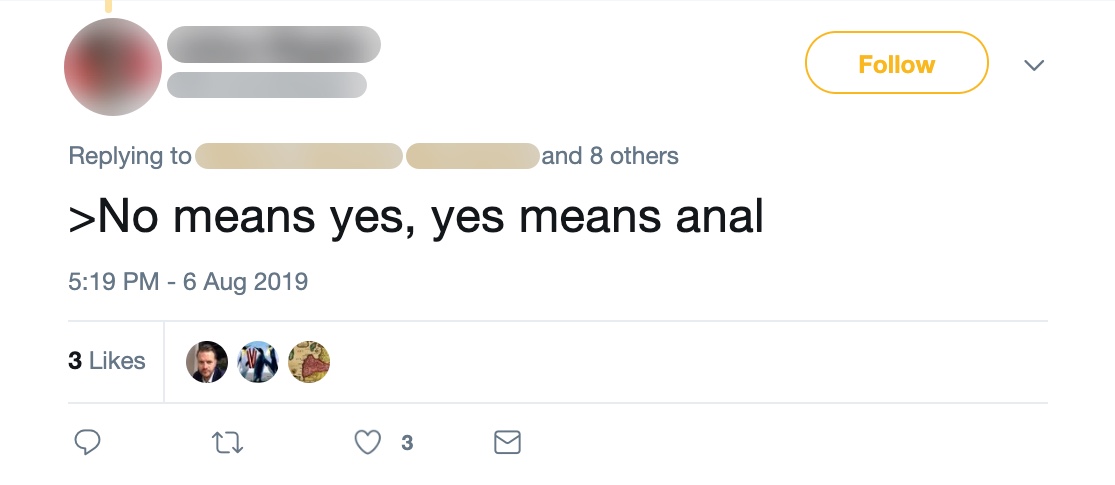
Porn, especially, is a huge source of misogynistic language.
Consider that, in popular porn videos, verbal attacks and verbal abuse during sex acts are very prevalent. One team of researchers looked at 50 of the most popular porn films and found that of the 304 scenes the movies contained, 48.7%—about half—contain verbal aggression, and that the typical scene averaged 12 verbal attacks or physical acts of violence.Bridges, A. J., Wosnitzer, R., Scharrer, E., Sun, C., & Liberman, R. (2010). Aggression and sexual behavior in best-selling pornography videos: a content analysis update. Violence against women, 16(10), 1065–1085. https://doi.org/10.1177/1077801210382866Copy
Why does any of this matter? Because language is often reflexive of inner beliefs. So when the normalization or trivialization of rape or sexual assault—or abusive attitudes toward women in general—through misogynistic language are packaged and sold as scintillating sexual fantasies to countless consumers, these toxic ideas about women are further ingrained and accepted.
So with the definition of rape culture being an environment that normalizes sexual violence that is perpetuated by misogynistic language? These examples only confirm that.
5. “…Perpetuated through the objectification of women’s bodies…”
Look no further than the porn industry and pop culture to see the normalization or celebration of sexual violence perpetuated through female objectification.
Porn reinforces the idea that women are just sex objects to be used and discarded. After all, objects can’t have feelings or respond—since they are, by definition, objects. Porn has been shown to fuel and legitimize this kind of violence, specifically against women, through the medium of sexual objectification.
For example, a study by Princeton psychologists showed a group of men pictures of male and females, some barely clothed and some not. During the study, the psychologists monitored their medial prefrontal cortex (mPFC), which is involved in recognizing human faces and distinguishing one person from another. For the most part, the mPFC was activated with each picture. However, when the men viewed the pictures of sexually dressed women, it was not activated. Basically, the automatic reaction in the men’s brains suggests that they didn’t perceive the women as a fully human person. Just as a body.
Research routinely shows that frequent porn consumers are more likely to sexually objectify and dehumanize others,Mikorski, R., & Szymanski, D. M. (2017). Masculine norms, peer group, pornography, Facebook, and men’s sexual objectification of women. Psychology of Men & Masculinity, 18(4), 257-267. doi:10.1037/men0000058Copy Skorska, M.N., Hodson, G., & Hoffarth, M.R. (2018). Experimental effects of degrading versus erotic pornography exposure in men on reactions toward women (objectification, sexism, discrimination). The Canadian Journal of Human Sexuality, 27, 261 - 276.Copy Zhou, Y., Liu, T., Yan, Y., & Paul, B. (2021). Pornography use, two forms of dehumanization, and sexual aggression: Attitudes vs. behaviors. Null, 1-20. https://doi.org/10.1080/0092623X.2021.1923598Copy more likely to express an intent to rape,Foubert, J. D., Brosi, M. W., & Bannon, R. S. (2011). Pornography viewing among fraternity men: Effects on bystander intervention, rape myth acceptance and behavioral intent to commit sexual assault.18(4), 212-231. doi:10.1080/10720162.2011.625552Copy less likely to intervene during a sexual assault,Foubert, J. D., Brosi, M. W., & Bannon, R. S. (2011). Pornography viewing among fraternity men: Effects on bystander intervention, rape myth acceptance and behavioral intent to commit sexual assault.18(4), 212-231. doi:10.1080/10720162.2011.625552Copy Foubert, J. D., & Bridges, A. J. (2017). What Is the Attraction? Pornography Use Motives in Relation to Bystander Intervention. Journal of Interpersonal Violence, 32(20), 3071–3089. https://doi.org/10.1177/0886260515596538Copy more likely to victim-blame survivors of sexual violence,Foubert, J. D., Brosi, M. W., & Bannon, R. S. (2011). Pornography viewing among fraternity men: Effects on bystander intervention, rape myth acceptance and behavioral intent to commit sexual assault.18(4), 212-231. doi:10.1080/10720162.2011.625552Copy Loughnan, S., Pina, A., Vasquez, E. A., & Puvia, E. (2013). Sexual Objectification Increases Rape Victim Blame and Decreases Perceived Suffering. Psychology of Women Quarterly, 37(4), 455–461. https://doi.org/10.1177/0361684313485718Copy more likely to support violence against women,Wright, P. J., & Tokunaga, R. S. (2016). Men's Objectifying Media Consumption, Objectification of Women, and Attitudes Supportive of Violence Against Women. Archives of sexual behavior, 45(4), 955–964. https://doi.org/10.1007/s10508-015-0644-8Copy Seabrook, R. C., Ward, L. M., & Giaccardi, S. (2019). Less than human? media use, objectification of women, and men’s acceptance of sexual aggression. Psychology of Violence, 9(5), 536-545. doi:10.1037/vio0000198Copy more likely to forward sexts without consent,van Oosten, J., & Vandenbosch, L. (2020). Predicting the Willingness to Engage in Non-Consensual Forwarding of Sexts: The Role of Pornography and Instrumental Notions of Sex. Archives of sexual behavior, 49(4), 1121–1132. https://doi.org/10.1007/s10508-019-01580-2Copy and more likely to commit actual acts of sexual violence.Wright, P. J., Tokunaga, R. S., & Kraus, A. (2016). A meta-analysis of pornography consumption and actual acts of sexual aggression in general population studies. Journal of Communication, 66(1), 183-205. doi:https://doi.org/10.1111/jcom.12201Copy Rostad, W. L., Gittins-Stone, D., Huntington, C., Rizzo, C. J., Pearlman, D., & Orchowski, L. (2019). The association between exposure to violent pornography and teen dating violence in grade 10 high school students. Archives of Sexual Behavior, 48(7), 2137-2147. doi:10.1007/s10508-019-1435-4Copy Goodson, A., Franklin, C. A., & Bouffard, L. A. (2021). Male peer support and sexual assault: The relation between high-profile, high school sports participation and sexually predatory behaviour. 27(1), 64-80. doi:10.1080/13552600.2020.1733111Copy Mikorski, R., & Szymanski, D. M. (2017). Masculine norms, peer group, pornography, Facebook, and men’s sexual objectification of women. Psychology of Men & Masculinity, 18(4), 257-267. doi:10.1037/men0000058Copy
A 2013 study on the effect of access and exposure to porn on young people “found compelling evidence that too many boys believe they have an absolute entitlement to sex at any time, in any place, in any way and with whomever they wish. Equally worryingly, we heard that too often girls feel they have no alternative but to submit to boys demands, regardless of their own wishes.”Horvath, M. A. H., Alys, L., Massey, K., Pina, A., Scally, M., & Adler, J. R. (2013). “Basically... porn is everywhere”: A rapid evidence assessment on the effects that access and exposure to pornography has on children and young people. London: Middlesex University. Retrieved from https://www.mdx.ac.uk/__data/assets/pdf_file/0026/48545/BasicallyporniseverywhereReport.pdfCopy Clearly, porn’s messages of objectification sink in early.
But it isn’t just hardcore porn that sells objectifying messages.
A 2016 study published in The Journal of Sex Research found that sexually objectifying portrayals of women occur all too frequently in mainstream media—raising critical questions about how exposure to this content can impact others impressions of women and women’s views of themselves.Ward, L.M. (2016). Media and Sexualization: State of Empirical Research, 1995–2015, The Journal of Sex Research, 53:4-5, 560-577, DOI: 10.1080/00224499.2016.1142496Copy
“A total of 109 publications that contained 135 studies were reviewed,” the researchers said. “The findings provided consistent evidence that regular, everyday exposure to this content is directly associated with a range of consequences, including higher levels of body dissatisfaction, greater self-objectification, greater support of sexist beliefs and of adversarial sexual beliefs, and greater tolerance of sexual violence toward women…Exposure to this content leads both women and men to have a diminished view of women’s competence, morality, and humanity.”Ward, L.M. (2016). Media and Sexualization: State of Empirical Research, 1995–2015, The Journal of Sex Research, 53:4-5, 560-577, DOI: 10.1080/00224499.2016.1142496Copy
Objectifying, whether for men or women, is clearly a problematic issue that perpetuates rape culture mentalities. Check.
6. “…Perpetuated through glamorization of sexual violence…”
We can probably think of a movie, show, book, or meme that paints sexual violence in a glorifying or glamorizing way. A very simple example of this is the best-selling erotica series, Fifty Shades of Grey. Even though it normalizes an abusive relationship, the fan base is largely made up of women.
As a recap, or for those who aren’t familiar, the “Fifty Shades” story centers around a controlling and sadistic millionaire CEO named Christian Grey with a tormented past who seduces a sweet, inexperienced college girl into his selfish world of painful bondage sex. E. L. James, the author, wrote the Fifty Shades trilogy very loosely based on bondage and discipline (B&D), dominance and submission (D&S), and sadism & masochism (S&M) practices, or BDSM for short. But it’s important to note that those within the BDSM community absolutely do not accept Christian’s behavior as being representative of what happens during “scenes,” or encounters between BDSMers. Instead of a sexual interest, they too call it abuse. Many scenes from the books can’t be distinguished between actual #MeToo stories—just take our quiz to see for yourself.
Even still, this sexually violent relationship dressed up as a love story has grown to a staggering $1.225 billion franchise, worldwide.
But Fifty Shades is tame compared to what else is out there. A comment left on one of the articles about violent porn shared on our Facebook page:
It’s no secret that rape porn is one of the most popular genres on mainstream sites right now.
Sometimes, it’s marketed under terms like “painal,” which means painful “surprise” anal, but sometimes, it’s just marketed as what it is. Even if these fantasized scenarios are just actors playing out a scene and none of it is real, the more “authentic” the scene feels, the more sexy it’s viewed to be. And even if some of these videos are scripted, we know for a fact that some of these are actual rapes caught on tape.
And sometimes, porn consumption escalates to the point that fantasy scenarios aren’t enough anymore.
Consider the fact that our site, FightTheNewDrug.org, receives thousands of visitors every year from people who are trying to find real rape videos through Google. Here’s just a small sample of the keywords internet users have typed in before they ended up on our site:
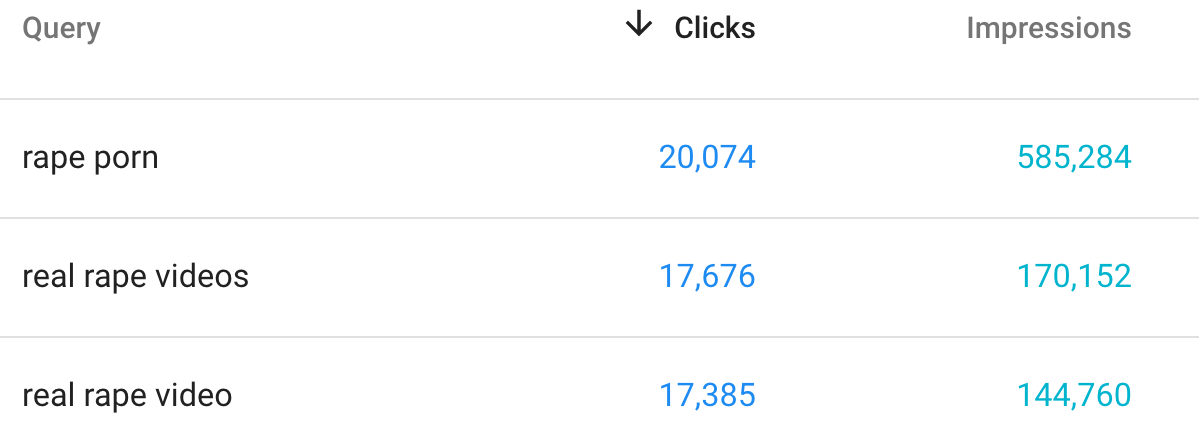
These were just a few of the searches and the number of clicks we received in the last 12 months alone. Consider all of the people who were searching for rape porn but didn’t end up on our site—this is likely just a small sampling of porn consumers seeking out rape porn.
So, rape culture being perpetuated through the glamorization of sexual violence? Unfortunately, this one checks out, too, big time.
7. “…A society that disregards women’s rights and safety.”
In a society where rape culture prevalent, victims of rape and sexual assault are seen as responsible for their assaults. Instead of asking why rapists rape, it instead asks what victims did to cause it, or what extraordinary measures women can take to avoid getting assaulted.


In one study, fraternity men who consumed mainstream pornography expressed a greater intent to commit rape if they knew they would not be caught than those who did not consume pornography.
Those who consumed sadomasochistic pornography expressed significantly less willingness to intervene in situations of sexual violence, greater belief in rape myths, and greater intent to commit rape. Among those who consumed rape-themed pornography, the researchers described “serious effects” including less bystander willingness to intervene, greater belief in rape myths, and greater intent to commit rape. In other words, there was no type of pornography that did not result in a greater intent to commit rape by a user if they knew they would not be caught.Foubert, J. D., Brosi, M. W., & Bannon, R. S. (2011). Pornography viewing among fraternity men: Effects on bystander intervention, rape myth acceptance and behavioral intent to commit sexual assault.18(4), 212-231. doi:10.1080/10720162.2011.625552Copy
And yet, we still live in a world where porn is largely celebrated, and even encouraged as a means of sexual release, despite its negative effects.
This part definitely checks out.
Here are a few more examples of rape culture in our pornified world
1. Examples of rape culture include lenient or nonexistent sentences for convicted rapists because of the belief that their assault “was not that bad.” The normalization of sexual assault in our culture that dismisses the severity of its effects on victims is another way of excusing this behavior.

3. In sports and gaming culture, the word “rape” is sometimes used interchangeably with “defeat.” For example, at times, gamers will talk about how the other player/team “raped them” and racked up more points, kills, etc. This trivializes the seriousness of rape and sexual assault, which is a part of rape culture.
4. Sometimes, even well-meaning anti-porn advocates fall into the rape culture trap of excusing or normalizing assault of porn performers by blaming victims. This was a comment under one of our articles about the sexual trauma that performers often endure.

This thought process that leaves victims responsible for their own abuse negates all of the force, fraud, and coercion that exists in the porn industry. Also, consider that performers who seek out careers the industry do not know about the prevalence of sexual assault on and off set—this is part of the reason why we educate about abuse in the industry. Performer or not, no one deserves to be assaulted. We all deserve to know the facts to make educated decisions on porn.
5. It is dismissive of sexual assault survivors to claim that their abuse wasn’t truly terrible if they don’t report it to police.
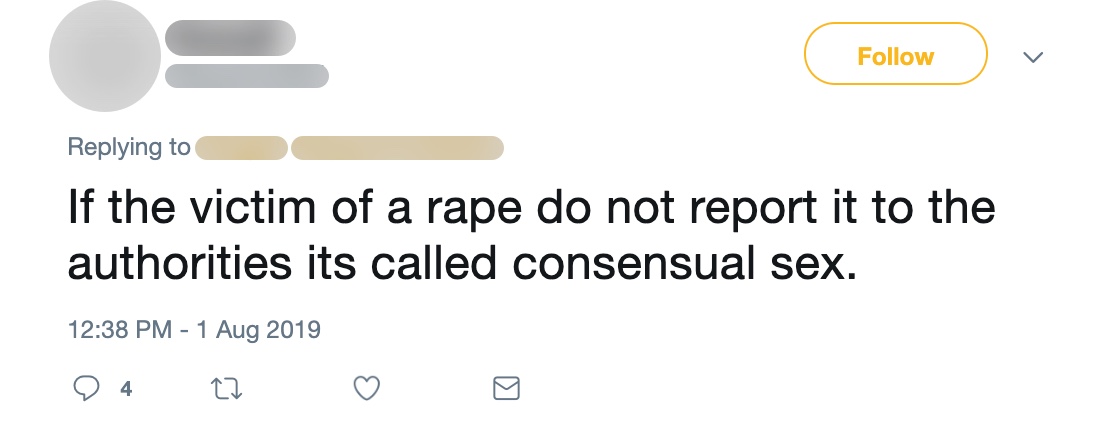
Consider how sexual assault is one of the most degrading, traumatizing, and shame-inducing things that can happen to a person. Often, survivors avoid reporting because they are afraid they won’t be believed, they don’t want to be re-traumatized by talking about their abuse, and many survivors blame themselves for their assaults. Not reporting sexual assault does not erase that it happened. Click here to read more about why survivors do not always report their assault.
6. Part of rape culture is not believing that men can be assaulted, too. A couple of years ago, when the #MeToo movement started gaining steam, actor, activist and Fighter Terry Crews spoke out about his own sexual assault experience.
This whole thing with Harvey Weinstein is giving me PTSD. Why? Because this kind of thing happened to ME. (1/Cont.)
— terry crews (@terrycrews) October 10, 2017
He was met by support and love, but also with a few who mocked his vulnerability in sharing.
50 Cent mocked Terry Crews on social media for being open about his sexual assault experience, but Twitter was not having it: pic.twitter.com/M0MeRMzYzf
— AJ+ (@ajplus) June 27, 2018
7. Another example of rape culture is the fact that porn plotlines often sound like real stories of sexual assault. Check out this blog to see what we’re talking about.
What this all means
Given all of this information, how can it be said that rape culture is fabricated?
The irony is that, often, claims that rape culture doesn’t exist only further confirm that it does—the denial of rape culture often accompanies victim-blaming, normalizing assault, minimizing rates of assault, and inflating false reports. These things are all part of rape culture itself.
As an anti-porn, pro-love organization, it all comes back to how porn fuels this phenomenon.
Not surprisingly, research routinely shows that porn consumers are more likely to be sexually aggressive.Wright, P. J., Tokunaga, R. S., & Kraus, A. (2016). A meta-analysis of pornography consumption and actual acts of sexual aggression in general population studies. Journal of Communication, 66(1), 183-205. doi:https://doi.org/10.1111/jcom.12201Copy
Of course, not every porn consumer is a rapist or is going to turn into a rapist.
That doesn’t change the fact that pornography is hitting us with a tidal wave of dehumanizing violence. It makes no sense for our society to accept the messages of porn, while at the same time calling for an end to sexual violence. Porn is reinforcing the message that humiliation and violence are normal parts of what sex is supposed to be.Ezzell, M. B., Johnson, J. A., Bridges, A. J., & Sun, C. F. (2020). I (dis)like it like that: Gender, pornography, and liking sex. J.Sex Marital Ther., 46(5), 460-473. doi:10.1080/0092623X.2020.1758860Copy
By sharing this info, we simply want to help you re-evaluate what you think you know about porn. Our goal as an organization is to shine a light on the facts and spark conversations that are based in research, instead of what you might read on magazine covers or hear around school or work. Porn isn’t healthy, it isn’t cool, and it doesn’t help us to be better partners or friends. Porn, violence, and rape are all more closely connected than many in society might realize, and it’s our time to raise awareness on these important facts.
We can change this. Starting today, we can do better. Each of us can choose to combat rape culture by educating others on the realities of rape and how porn perpetuates a culture that discredits victims and normalizes assaults. When you hear rape jokes, speak up. If you notice victim-blaming language, kindly correct. Each of us has a part to play in combatting a culture that trivializes rape and disbelieves survivors.
Join us in fighting for love and cultivating a culture that upholds respect for all humans, including sexual assault survivors.

Your Support Matters Now More Than Ever
Most kids today are exposed to porn by the age of 12. By the time they’re teenagers, 75% of boys and 70% of girls have already viewed itRobb, M.B., & Mann, S. (2023). Teens and pornography. San Francisco, CA: Common Sense.Copy —often before they’ve had a single healthy conversation about it.
Even more concerning: over half of boys and nearly 40% of girls believe porn is a realistic depiction of sexMartellozzo, E., Monaghan, A., Adler, J. R., Davidson, J., Leyva, R., & Horvath, M. A. H. (2016). “I wasn’t sure it was normal to watch it”: A quantitative and qualitative examination of the impact of online pornography on the values, attitudes, beliefs and behaviours of children and young people. Middlesex University, NSPCC, & Office of the Children’s Commissioner.Copy . And among teens who have seen porn, more than 79% of teens use it to learn how to have sexRobb, M.B., & Mann, S. (2023). Teens and pornography. San Francisco, CA: Common Sense.Copy . That means millions of young people are getting sex ed from violent, degrading content, which becomes their baseline understanding of intimacy. Out of the most popular porn, 33%-88% of videos contain physical aggression and nonconsensual violence-related themesFritz, N., Malic, V., Paul, B., & Zhou, Y. (2020). A descriptive analysis of the types, targets, and relative frequency of aggression in mainstream pornography. Archives of Sexual Behavior, 49(8), 3041-3053. doi:10.1007/s10508-020-01773-0Copy Bridges et al., 2010, “Aggression and Sexual Behavior in Best-Selling Pornography Videos: A Content Analysis,” Violence Against Women.Copy .
From increasing rates of loneliness, depression, and self-doubt, to distorted views of sex, reduced relationship satisfaction, and riskier sexual behavior among teens, porn is impacting individuals, relationships, and society worldwideFight the New Drug. (2024, May). Get the Facts (Series of web articles). Fight the New Drug.Copy .
This is why Fight the New Drug exists—but we can’t do it without you.
Your donation directly fuels the creation of new educational resources, including our awareness-raising videos, podcasts, research-driven articles, engaging school presentations, and digital tools that reach youth where they are: online and in school. It equips individuals, parents, educators, and youth with trustworthy resources to start the conversation.
Will you join us? We’re grateful for whatever you can give—but a recurring donation makes the biggest difference. Every dollar directly supports our vital work, and every individual we reach decreases sexual exploitation. Let’s fight for real love:
